WORLD TRAVEL NEWS ARTICLE
LITHUANIA
'In search of Amber'
Lithuania has one of the most complicated histories imaginable. Perhaps not surprising bearing in mind its location bordered on one side by the Baltic Sea and with Latvia, Belarus, Poland and Russia as its neighbours. Consequently for centuries it has had one long struggle for independence as its immediate, and more distant neighbours, sought to control it.
But in 1988 the Lithuanian Reform Movement ‘Sajudis’ was founded calling for openness, democracy and sovereignty culminating on 16 February 1989 with Lithuanian Independence Day.
Later that year some two million Lithuanians, Latvians and Estonians joined hands forming a chain stretching over 650 kilometres protesting at the 50th anniversary of the Molotov-Ribbentrop Pact. This momentous event is commemorated by a stone set in the pavement just outside the cathedral in Vilnius.
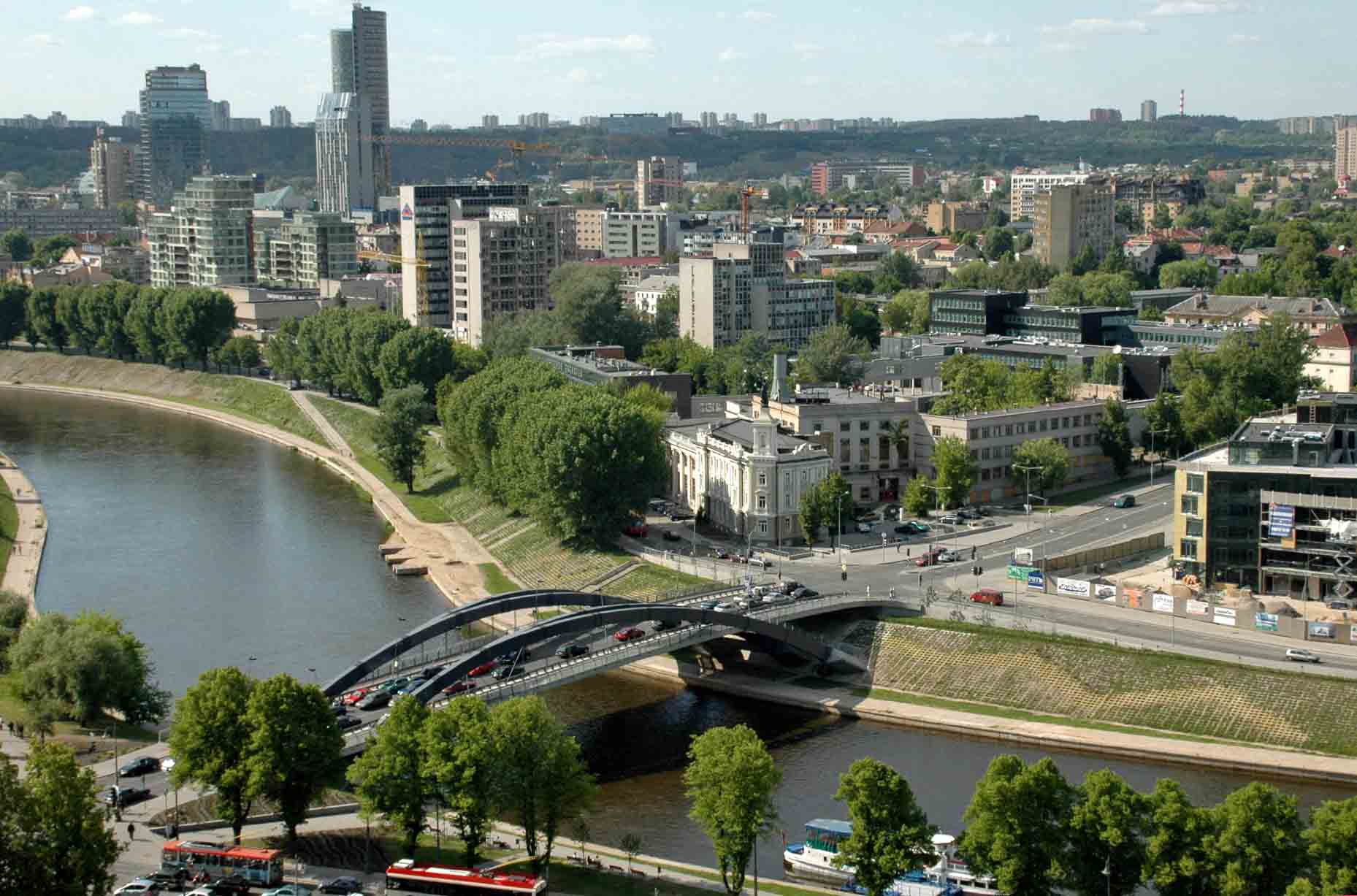
Vilnius
However, in 1991 Soviet forces tried again to dominate this feisty little country but the movement for independence was now too strong and the invasion lasted only a few months. That September, along with Latvia and Estonia, it was admitted into the United Nations. Lithuania joined the EU in 2004 though it still retains its own currency. In 2009 it celebrated the millennium anniversary of its name as well as Vilnius being chosen to be a European Capital of Culture.
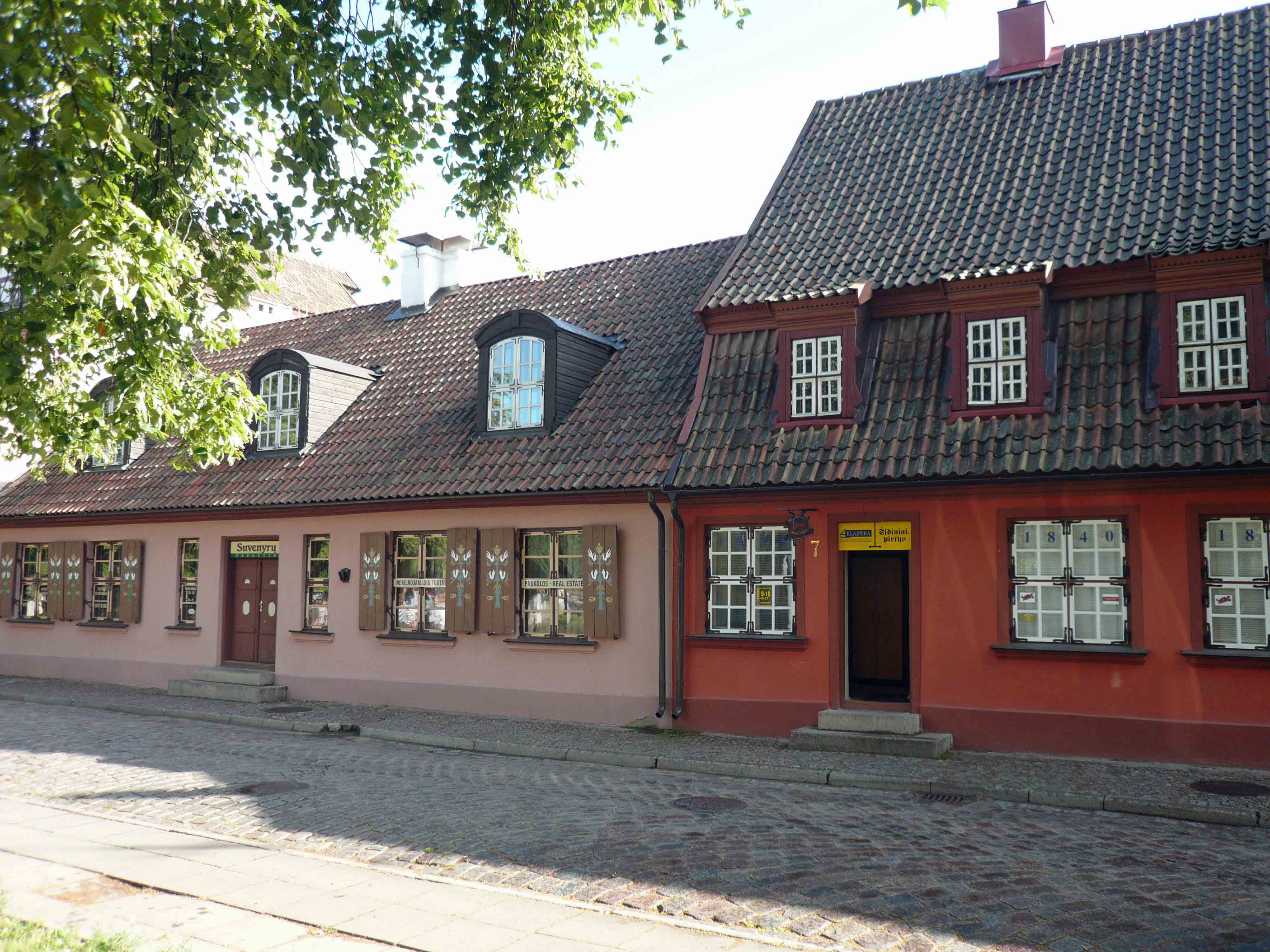
Examples of the 'Hansel and Gretel' houses
We started our visit to Vilnius driving through one of the suburbs passing pretty Hansel-and-Gretel-like wooden houses, once hunting lodges in the forest, before crossing the river and stopping outside the church of St Peter and St Paul at the foot of the hill topped by the city’s castle. (It is a fair climb to the castle but a funicular has been thoughtfully provided for the less active.) The exterior of the church is not particularly memorable but its interior, with its intricate, virtually ungilded, stucco is stunningly beautiful. It is made up of some 2000 statues to say nothing of animals, swags of flowers, fruit and plants.
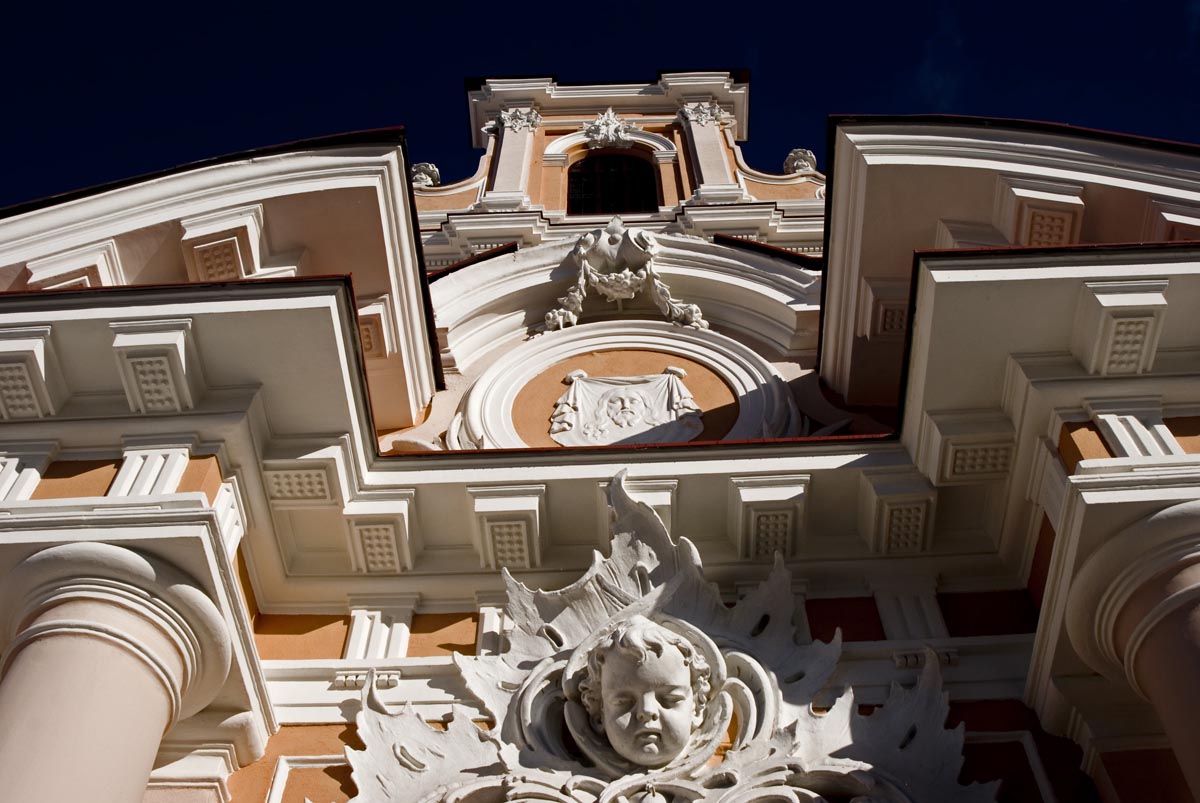
St. Casimir
Lithuania was one of the last pagan countries in Europe so Vilnius’s churches are comparatively ‘modern’, but they too have had a varied history. Take for instance the church of St Casimir. It is the oldest Baroque church in Vilnius, founded in 1604 by the Jesuits, but was in the intervening years used by Napoleon’s troops as a grain store. It has also served as a Russian Orthodox church and as a museum of atheism in the Soviet regime. Likewise the Bernardine church has seen better days. But luckily this splendid building is now being restored. But the church I loved most was the Gothic red-bricked St Anne’s. I wasn’t the first to admire it. Legend has it that Napoleon 1 was captivated too and, if he had been able, would have taken it back to Paris with him.
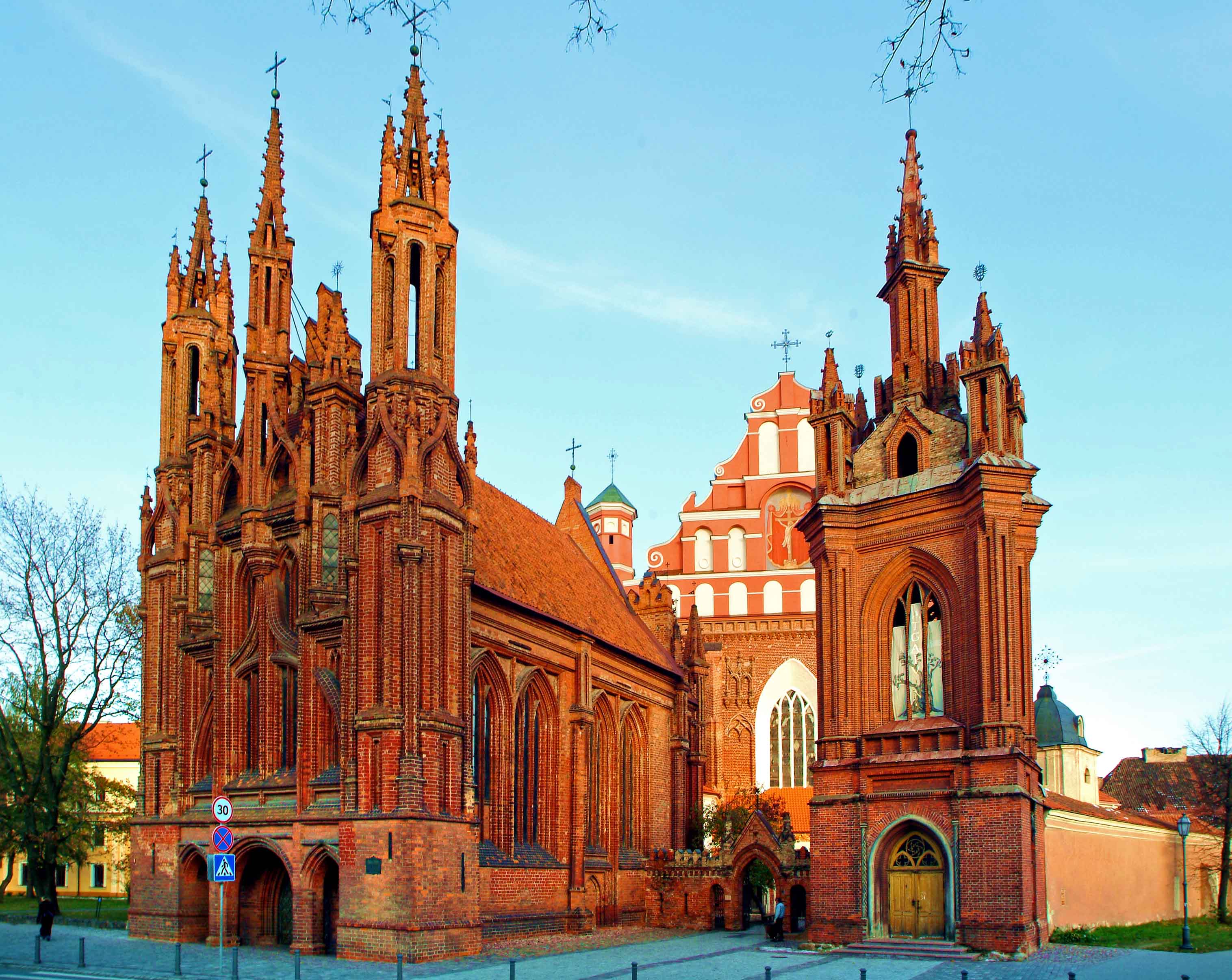
St Anne’s Church
Later we paused to admire some of the buildings and courtyards of the ancient university whose young students add to the life, movement and vitality of the city’s streets and bars. Not far away we came to Daukanto Square (actually a triangle) and the elegant Presidential Palace, which has had the likes of Napoleon, Louis XVIII of France, and Tsar Alexander 1 as its guests.

Vilnius University's interior
Vilnius is an attractive city, especially its quaint medieval quarter with its warren of narrow cobbled streets and old buildings. And it was here that my lesson in amber began in earnest at the Amber Museum-Gallery on Mykolo Street, housed in a building dating back to the early 15th century. In those days the building was used by craftsmen making ceramics and two of the original kilns can be seen in the basement. Also on display is amber (the resin of pine trees growing some 50 million years ago), natural or polished, transparent or opaque, with colours ranging from red and black to shades of honey along with green, blue and white. The beautiful amber in the museum shop made me long to use my credit card.

An fine example of Amber
There are many shops and stalls in Vilnius selling amber or what purports to be amber. Amber can be easily faked. We were told that ways to test to see if it is genuine include hot needles or holding it in a flame! It seemed easier to buy from a reputable shop that would also supply a certificate of authenticity.
We had wandered round the Amber museum chattering happily away but the KGB (Genocide) Museum reduced us to silence and tears. This former prison had been left almost as it was and the shock of the basement’s grimness and the horrific atrocities carried out there was sobering beyond words. The exhibits on the upper floors covering the Soviet occupation, including the life of the Partisans who fled to the forests to continue their fight for independence, were only slightly less disturbing. Grim it certainly is, but a visit is a must.
It was a relief to get out into the sunshine and head back along Gedimino Avenue, the so-called Champs Elysees of Vilnius, admiring the trendy shops and some rather expensive boutiques, to the cathedral and the older part of Vilnius.
I never did buy my amber, but I am perfectly willing to go back and have another look.
Getting There:
Vilnius International Airport is 5.9 kilometres ( 3.7 miles) south of the city.
For more information please visit:-
Lithuania: www.lithuaniatourism.co.uk
Vilnius: www.vilnius.com
You may also like to read

ESTONIA - HISTORIC TALLINN
Award winning travel writer Sue Dobson introduces Tour-smart travellers to the delights awaiting you in Estonia .
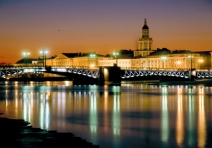
RUSSIA - ST.PETERSBURG
Tour-smart gives you a small insight to magnetic St. Petersburg. A relatively “young” city, it\'s mystery is enhanced by exciting stories, myths and legends.
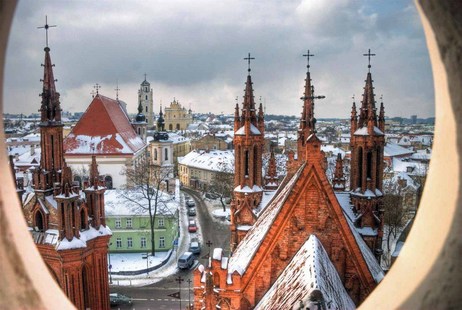
Comments